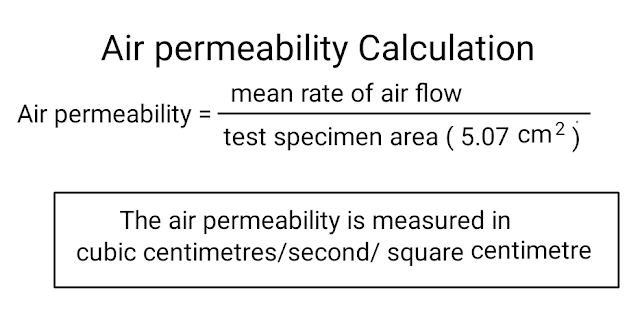- Qinsun Instruments Co., Ltd.
- Tell:+86-21-6780 0179
- Phone:+86-17740808215
- Address:No. 2578 Minhang District Gu Dai Road, Shanghai
- Contact:Mr. Li
- QQ:846490659
How do you test the air permeability of fiber fabric?

Testing the air permeability of fiber fabric is an essential procedure in textile engineering and quality control. Air permeability, also known as breathability, measures the ease with which air can pass through a fabric. This property is crucial for various applications, such as clothing, medical textiles, and industrial filters. In this comprehensive guide, we will explore the methods and techniques for testing the air permeability of fiber fabrics.
Table of Contents
1. Introduction
2. Importance of Air Permeability Testing
3. Factors Affecting Air Permeability
4. Testing Standards and Methods
4.1. The Gurley Method
4.2. The Frazier Method
4.3. The ASTM D737 Method
4.4. The ISO 9237 Method
5. Instruments and Equipment
6. Sample Preparation
7. Testing Procedure
8. Data Analysis and Interpretation
9. Conclusion
10. References
1. Introduction
Air permeability refers to the ability of a fabric to allow air to pass through it under specific conditions. It is an essential property for textiles used in various applications, including clothing, outdoor gear, medical textiles, and industrial applications. Proper air permeability ensures comfort, breathability, and functionality of these textiles.
2. Importance of Air Permeability Testing
Air permeability testing serves several purposes:
- Quality Control: Ensuring that textile products meet specified air permeability requirements.
- Product Development: Assessing the breathability of new fabric designs and materials.
- Regulatory Compliance: Meeting industry standards and regulations for specific applications.
- Performance Evaluation: Determining how well a fabric will perform in terms of comfort and functionality.
3. Factors Affecting Air Permeability
Several factors influence a fabric's air permeability:
- Fiber Type and Structure: Different fibers (e.g., cotton, polyester, nylon) have varying air permeability characteristics.
- Fabric Construction: Weave, knit, or nonwoven structure impacts air permeability.
- Fabric Thickness: Thicker fabrics usually have lower air permeability.
- Finishings: Chemical treatments or coatings can alter air permeability.
- Porosity: The presence of pores or holes in the fabric affects air permeability.
4. Testing Standards and Methods
Various testing methods and standards are available for measuring air permeability. Some commonly used methods include:
#4.1. The Gurley Method
The Gurley method measures the time it takes for 100 cubic centimeters of air to pass through a defined area of the fabric. The results are reported in Gurley seconds.
#4.2. The Frazier Method
The Frazier method measures the air permeability of a fabric sample by determining the volume of air that passes through it in a specific time. The result is reported in cubic feet per minute (CFM) or liters per second.
#4.3. The ASTM D737 Method
ASTM D737 is a widely accepted standard for measuring air permeability. It involves using a precision instrument that applies a constant air pressure to a fabric sample and calculates air permeability in cubic feet per minute per square foot (CFM/ft²).
#4.4. The ISO 9237 Method
ISO 9237 is an international standard for measuring the air permeability of fabrics. It is similar to ASTM D737 but reports air permeability in liters per second per square meter (L/s/m²).
5. Instruments and Equipment
To conduct air permeability testing, you'll need the following instruments and equipment:
- Air permeability tester (Gurley tester, Frazier tester, or equivalent)
- Fabric samples
- Stopwatch or timer
- Conditioning chamber (to control temperature and humidity)
- Weights (for some methods)

6. Sample Preparation
Proper sample preparation is critical for accurate results. Follow these steps:
- Cut fabric samples into the specified size and shape according to the chosen test method.
- Condition the samples in a controlled environment to ensure consistent temperature and humidity.
- Flatten and smooth the fabric samples to remove wrinkles and ensure uniform contact with the testing instrument.
7. Testing Procedure
The testing procedure varies depending on the selected method. Here, we outline the general steps:
1. Set up the air permeability tester according to the manufacturer's instructions.
2. Place the conditioned fabric sample securely in the test area.
3. Start the test and record the time it takes for air to pass through the fabric.
4. Repeat the test with multiple samples to ensure accuracy and consistency.
5. Calculate the air permeability value based on the chosen method (e.g., Gurley seconds, CFM, L/s/m²).
8. Data Analysis and Interpretation
Once you have collected air permeability data, analyze it to draw meaningful conclusions. Compare the results to industry standards or specific requirements for your application. Consider the impact of factors such as fiber type, fabric structure, and finishing treatments on air permeability.
9. Conclusion
Measuring the air permeability of fiber fabrics is crucial for ensuring the quality and performance of textile products. By following standardized testing methods and carefully preparing fabric samples, you can obtain accurate and reliable air permeability data. This information is valuable for product development, quality control, and regulatory compliance in various industries.
10. References
- ASTM D737-96(2016), "Standard Test Method for Air Permeability of Textile Fabrics."
- ISO 9237:1995, "Textiles — Determination of the Permeability of Fabrics to Air."
- R. H. Gong, "Air Permeability Testing of Fabrics: A Review," Textile Research Journal, vol. 79, no. 5, pp. 481-488, 2009.
This comprehensive guide covers the importance of air permeability testing, the factors affecting it, testing methods, equipment, sample preparation, testing procedures, and data analysis. It provides a solid foundation for anyone involved in the textile industry or textile research seeking to understand and measure the air permeability of fiber fabrics.





